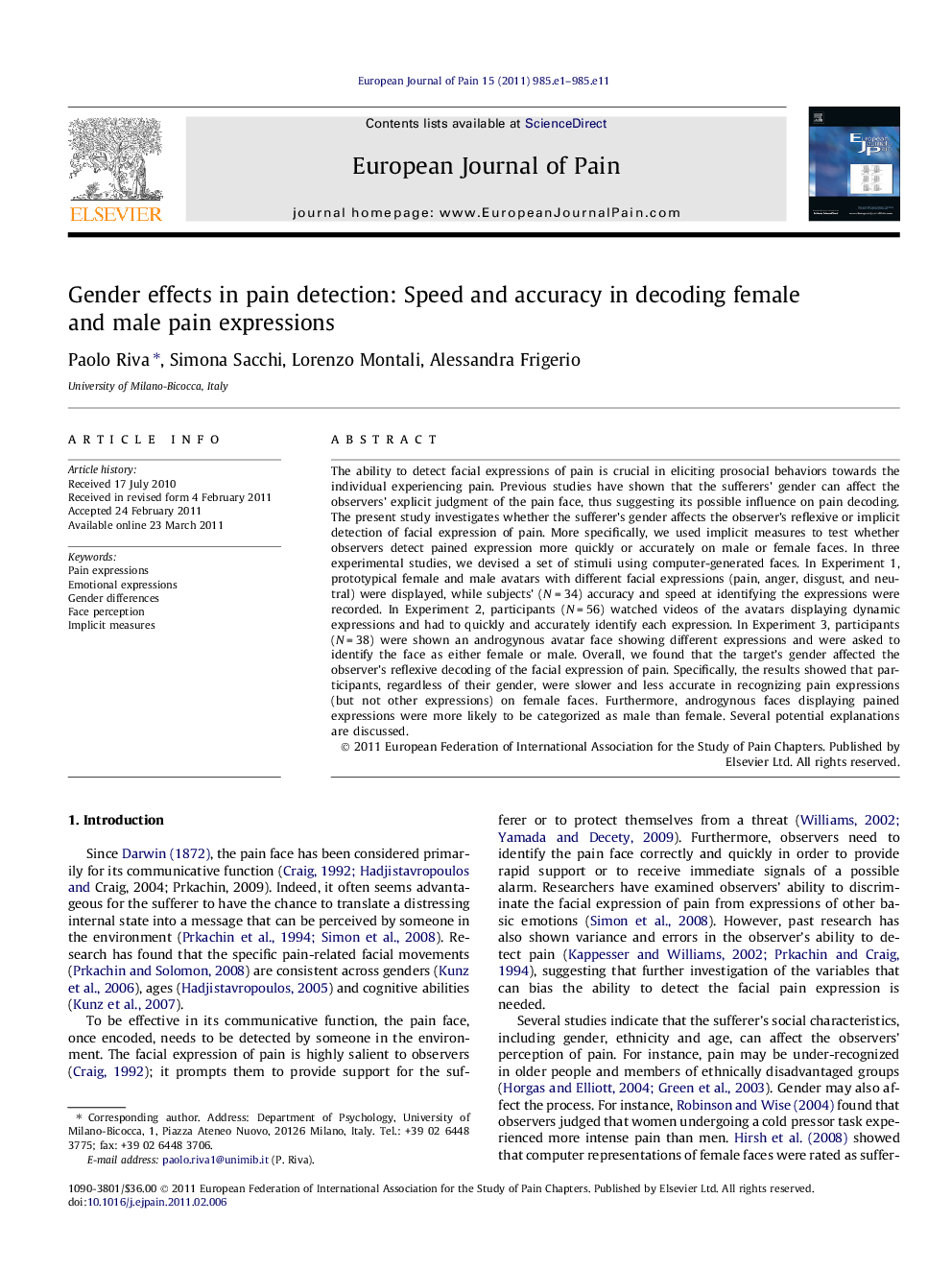| کد مقاله | کد نشریه | سال انتشار | مقاله انگلیسی | نسخه تمام متن |
|---|---|---|---|---|
| 907116 | 1472890 | 2011 | 11 صفحه PDF | دانلود رایگان |
عنوان انگلیسی مقاله ISI
Gender effects in pain detection: Speed and accuracy in decoding female and male pain expressions
دانلود مقاله + سفارش ترجمه
دانلود مقاله ISI انگلیسی
رایگان برای ایرانیان
کلمات کلیدی
موضوعات مرتبط
علوم زیستی و بیوفناوری
علم عصب شناسی
علوم اعصاب سلولی و مولکولی
پیش نمایش صفحه اول مقاله

چکیده انگلیسی
The ability to detect facial expressions of pain is crucial in eliciting prosocial behaviors towards the individual experiencing pain. Previous studies have shown that the sufferers' gender can affect the observers' explicit judgment of the pain face, thus suggesting its possible influence on pain decoding. The present study investigates whether the sufferer's gender affects the observer's reflexive or implicit detection of facial expression of pain. More specifically, we used implicit measures to test whether observers detect pained expression more quickly or accurately on male or female faces. In three experimental studies, we devised a set of stimuli using computer-generated faces. In Experiment 1, prototypical female and male avatars with different facial expressions (pain, anger, disgust, and neutral) were displayed, while subjects' (NÂ =Â 34) accuracy and speed at identifying the expressions were recorded. In Experiment 2, participants (NÂ =Â 56) watched videos of the avatars displaying dynamic expressions and had to quickly and accurately identify each expression. In Experiment 3, participants (NÂ =Â 38) were shown an androgynous avatar face showing different expressions and were asked to identify the face as either female or male. Overall, we found that the target's gender affected the observer's reflexive decoding of the facial expression of pain. Specifically, the results showed that participants, regardless of their gender, were slower and less accurate in recognizing pain expressions (but not other expressions) on female faces. Furthermore, androgynous faces displaying pained expressions were more likely to be categorized as male than female. Several potential explanations are discussed.
ناشر
Database: Elsevier - ScienceDirect (ساینس دایرکت)
Journal: European Journal of Pain - Volume 15, Issue 9, October 2011, Pages 985.e1-985.e11
Journal: European Journal of Pain - Volume 15, Issue 9, October 2011, Pages 985.e1-985.e11
نویسندگان
Paolo Riva, Simona Sacchi, Lorenzo Montali, Alessandra Frigerio,